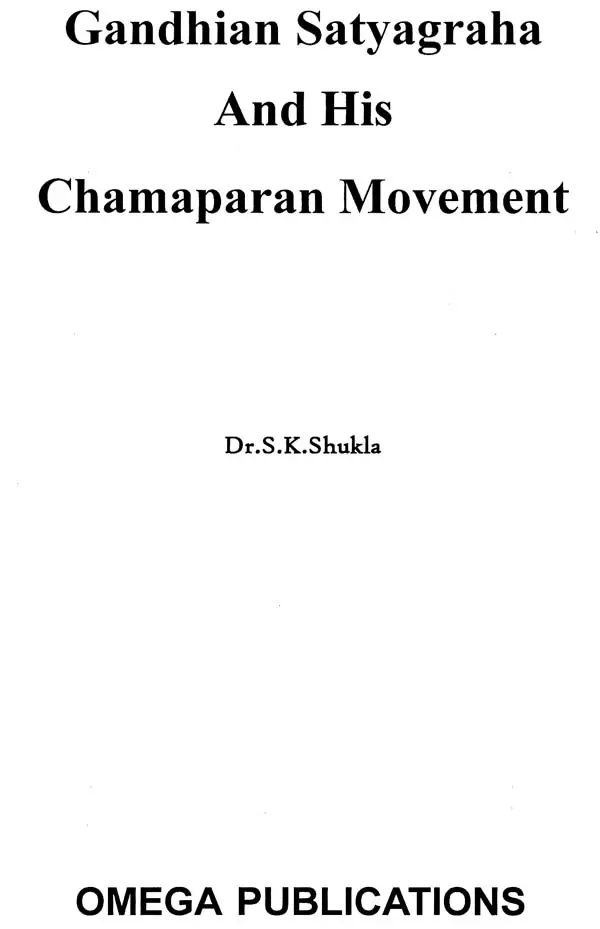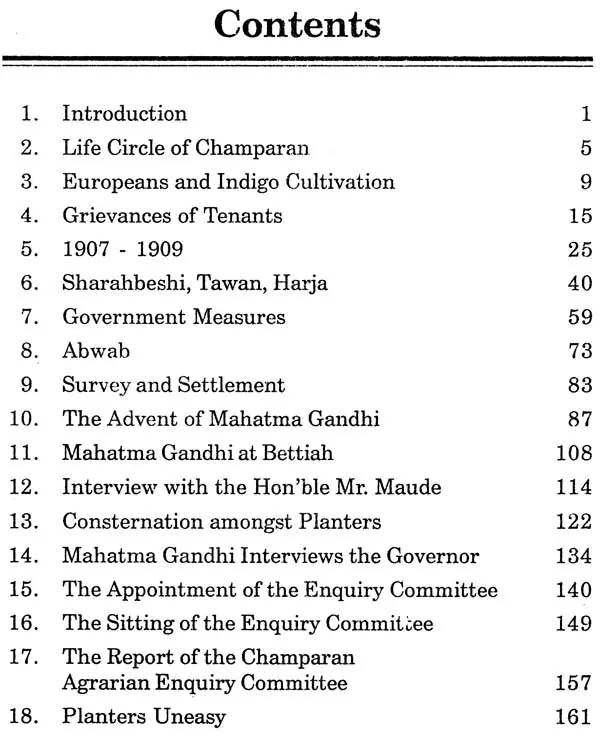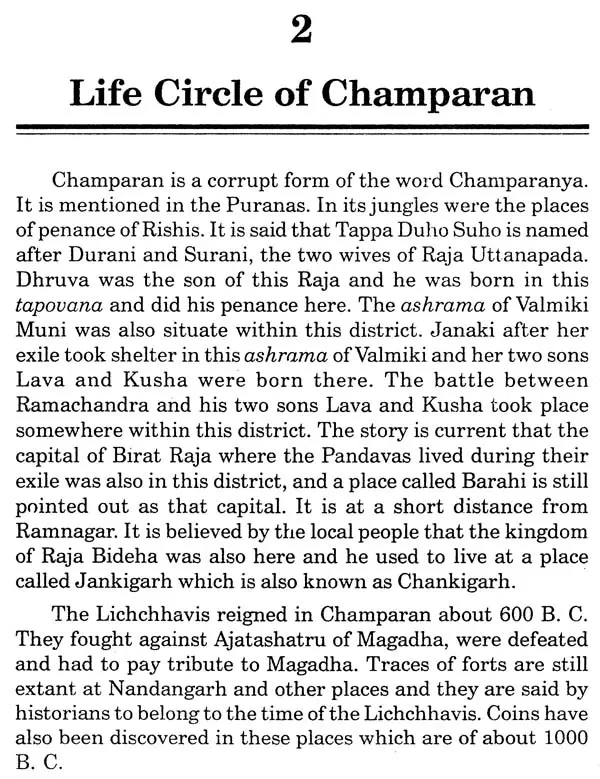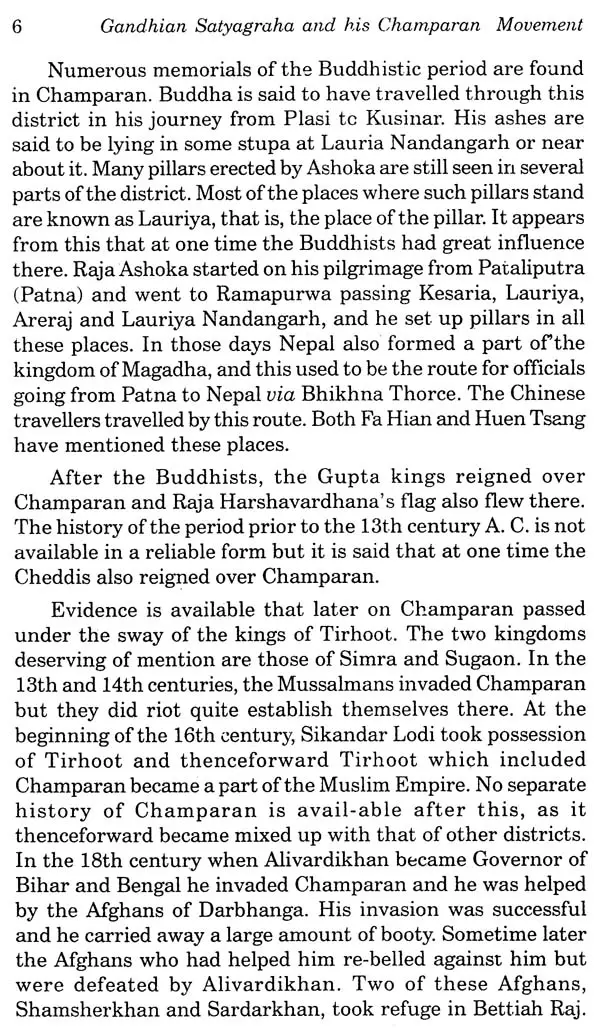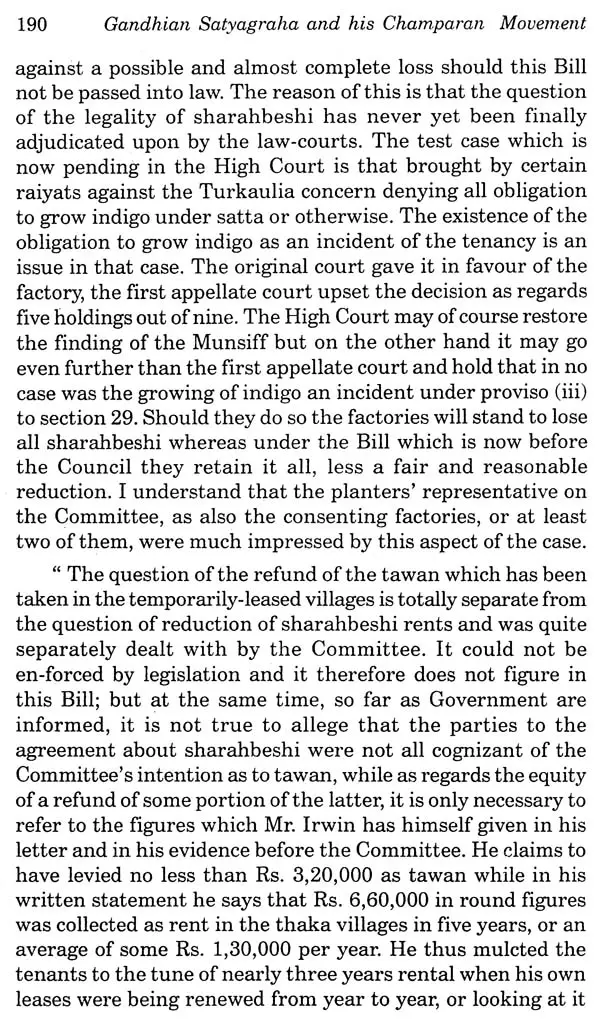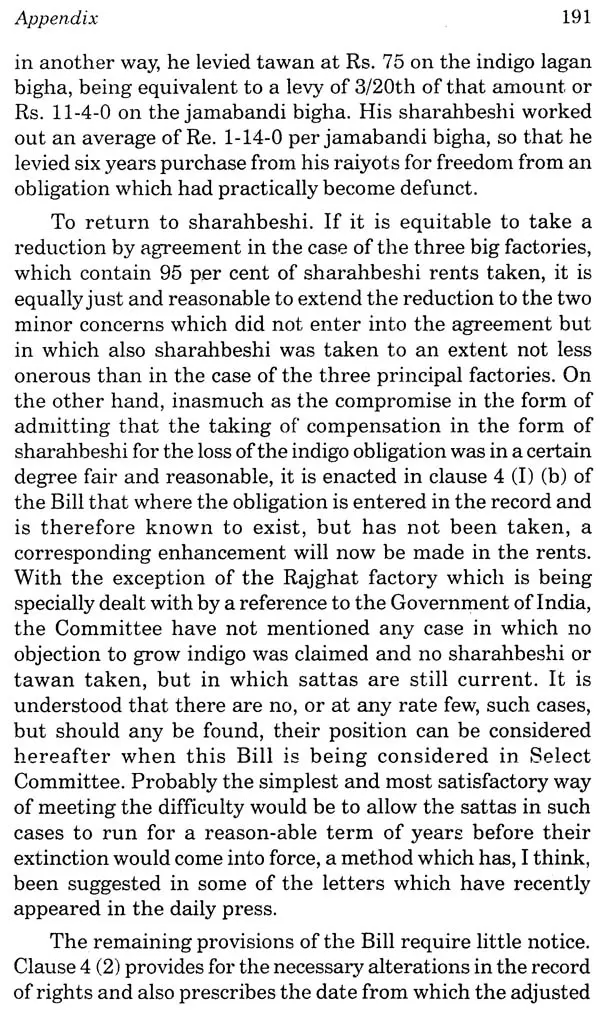
Gandhian Satyagraha and His Champaran Movement
Book Specification
| Item Code: | UAJ595 |
| Author: | S. K. Shukla |
| Publisher: | Omega Publication, New Delhi |
| Language: | English |
| Edition: | 2021 |
| ISBN: | 9788184550900 |
| Pages: | 206 |
| Cover: | HARDCOVER |
| Other Details | 8.50 X 5.50 inch |
| Weight | 350 gm |
Book Description
The first Satyagraha revolutions inspired by Mahatma Gandhi in the Indian Independence Movement occurred in Kheda district of Gujarat and the Champaran district of Bihar between the years of 1918 and 1919. Gandhi established an ashrama in Champaran, organizing scores of his veteran supporters and fresh volunteers from the region. He organized a detailed study and survey of the villages, accounting the atrocities and terrible episodes of suffering, including the general state of degenerate living. Building on the confidence of villagers, he began leading the clean-up of villages, building of schools and hospitals and encouraging the village leadership to undo purdah, untouchability and the suppression of women.
S.K. Shukla is Ph.D.; D. Litt. in Modern Indian History and is the author of several works on Indian nationalism and freedom movement. He has got more than 20 years teaching experience to his credit of postgraduate and M.Phil. classes. His nearly 10 research papers have been published in various journals of national and international repute. He is not only established scholar but a towering professor and writer of History. He has participated in national and international seminars.
The first Satyagraha revolutions inspired by Mahatma Gandhi in the Indian Independence Movement occurred in Kheda district of Gujarat and the Champaran district of Bihar between the years of 1918 and 1919. Gandhi established an ashrama in Champaran, organizing scores of his veteran supporters and fresh volunteers from the region. He organized a detailed study and survey of the villages, accounting the atrocities and terrible episodes of suffering, including the general state of degenerate living. Building on the confidence of villagers, he began leading the clean-up of villages, building of schools and hospitals and encouraging the village leadership to undo purdah, untouchability and the suppression of women. He was joined by many young nationalists from all over India, including Ramarshi Deo Trivedi "Rishi Ji", Brajkishore Prasad, Dr. Rajendra Prasad, Dr. Anugrah Narayan Sinha and Jawaharlal Nehru. But his main assault came as he was arrested by police on the charge of creating unrest and was ordered to leave the province. Hundreds of thousands of people protested and rallied outside the jail, police stations and courts demanding his release, which the court unwillingly did. Gandhi led organized protests and strike against the landlords, who with the guidance of the British government, signed an agreement granting more compensation and control over farming for the poor farmers of the region, and cancellation of revenue hikes and collection until the famine ended. It was during this agitation, that Gandhi was addressed by the people as Bapu (Father) and Mahatma (Great Soul). While many civic groups sent petitions and published editorials, Gandhi proposed satyagra.ha - non-violence, mass civil disobedience. While it was strictly non-violent, Gandhi was proposing real action, a real revolt that the oppressed peoples of India were dying to undertake.
**Contents and Sample Pages**
